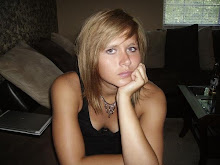
In class we read “The Photographer’s Eye,” which looked into how and why photographs look the way they do. It was not full of text, but simple descriptions. It is also full of old, famous pictures. He selected and sequenced photographs drawn from the history and range of the medium. The book also points out the challenges all photographers face. No matter what their level is.
I liked Charles Negre’s “Henry Le Secq at Notre Dame Cathedral”, Paris. 1851. Calotype. The eye goes directly to the gargoyle. Normally this ancient architectural style is bleak and cold to me, but this picture I found humorous. There is also a man standing next to the gargoyle on the balcony. The gargoyle seems more alive than the man. The gargoyle is larger and you can see some of his features, which overpower the man. The man is smaller and close to resembling a silhouette. Having more presense and character the gargoyle gives off more of a sense of life. From the man we can tell he has a beard, top hat, and suit. He looks powerful or wealthy.
I like that the vantage point is equal to the balcony of the man and gargoyle, which is high above the city. The shadow casted off the gargoyle and upon the man puts him into a silhouette, taking away some human characteristics. Also the blurry background of the city makes the architecture of the building stand out.
I liked Charles Negre’s “Henry Le Secq at Notre Dame Cathedral”, Paris. 1851. Calotype. The eye goes directly to the gargoyle. Normally this ancient architectural style is bleak and cold to me, but this picture I found humorous. There is also a man standing next to the gargoyle on the balcony. The gargoyle seems more alive than the man. The gargoyle is larger and you can see some of his features, which overpower the man. The man is smaller and close to resembling a silhouette. Having more presense and character the gargoyle gives off more of a sense of life. From the man we can tell he has a beard, top hat, and suit. He looks powerful or wealthy.
I like that the vantage point is equal to the balcony of the man and gargoyle, which is high above the city. The shadow casted off the gargoyle and upon the man puts him into a silhouette, taking away some human characteristics. Also the blurry background of the city makes the architecture of the building stand out.
My question: Was it planned that the gargoyle would look more humanistic than the man? Is it meant to be scary and chilling, or funny?

No comments:
Post a Comment